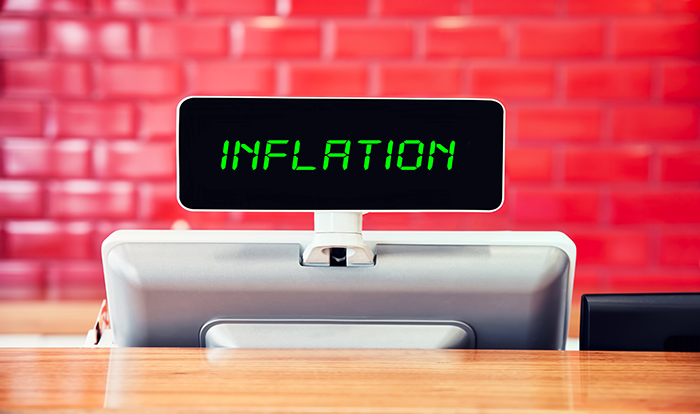With a volatile stock market, soaring inflation, and a looming recession, consumers are scrutinizing what’s a want versus a need. Unfortunately for the foodservice industry, eating out is one of the first luxuries that price-conscious consumers cross off their lists.
A recent 1,600-person survey found 67% of Americans dine out less due to inflation. Worse yet, this figure jumps to 90% for parents with children younger than 18, which is not good for restaurants who rely on these consumers with multiple mouths to feed to keep bottom lines healthy.
With food prices climbing, restaurant operators hiked up menu prices by 8.9% between June 2021 and June 2022. Prices are the highest they’ve been in 40 years, and consumers are taking note, especially the unlikeliest of consumers (aka: the ones with the most disposable income).Thirty-two percent of consumers who make $100,000 or more annually are paying more attention to menu prices due to inflation.
Despite this seemingly bleak outlook, the restaurant industry doesn’t need to sit idly by waiting for the economic tides to turn. Your business can still thrive and maintain a steady, or better yet, a booming flow of customers.
Curious how to do that? Focus on initiatives that generate sustainable customer loyalty and build, don’t break, the bank.
Reward your restaurant’s raving fans digitally
Don’t let your existing customers fall by the wayside because you’re hyperfocusing on new business. Not only do your existing customers spend 67% more than new customers, they cost you 10 times less. That’s why you must build a digitally-savvy loyalty program.
Take our friends at Chipotle. At 28 million members strong, their loyalty program is one of the fastest growing in the industry. For every dollar spent, members earn 10 points that they can redeem for a free menu item, apparel, or even a donation to one of Chipotle’s non-profit partners. Their key to success? They appeal to their members where they want to engage — digitally — by enabling them to access their points and other special offers through their mobile app or website. It’s a smart move considering 95% of loyalty program members want to engage with that brand’s program through emerging tech.
Follow their lead and create (or uplevel) a customized mobile app where your members can engage in a variety of ways, and you can capture important zero- and first-party behavior and preference data.
Add a personal touch
Whether you specialize in serving that blissful first sip of morning coffee to the hurried commuter or stacked ribs that fall off the bone to a family of four, it’s all about knowing your customer, especially when they’re more judicious about where they spend their money. Consumers want that personalized touch — 87% of Americans are willing to have some of their activity tracked in order to receive more personalized rewards and brand experiences.
A cutting-edge customer engagement ecosystem lets you send your more adventurous eater a notification about a new item hitting your menu or your creative-of-habit consumer a promotion about their favorite afternoon snack. It is, however, a fine line between being personal and being creepy. Data tells a story, but don’t let information overload make your communications feel like you know absolutely everything about your customer. Be authentic in your personalizations and when in doubt, put yourself in their shoes.
Don’t forget to crunch the numbers
You can offer clutch deals that drive sales — but they won’t be good for business if they fail to offset that promotion’s associated cost. While some consumers will buy more than what’s offered in a digital coupon, others will confine their ordering to your special offer. Do the math to ensure your profits are soaring, not plunging. Indoor Media provides a helpful formula for restaurants to assess whether their coupon deal is a boon, not a bust:
First, multiply your total average ticket amount by the total coupons deemed. That gives you the value of the sales generated from the promotions.
Subtract the following from that value:
Cost of goods sold (the wholesale cost of goods)
Cost of giveaway (the wholesale cost of the discount)
Cost of the ad (amount paid for coupon distribution.)
The final number is the profit generated from your coupon promotion
Customer loyalty is always crucial, but it’s even more vital when the economy ebbs and flows. Although times are uncertain, be certain you’re putting a proactive foot forward and making every customer connection count.

